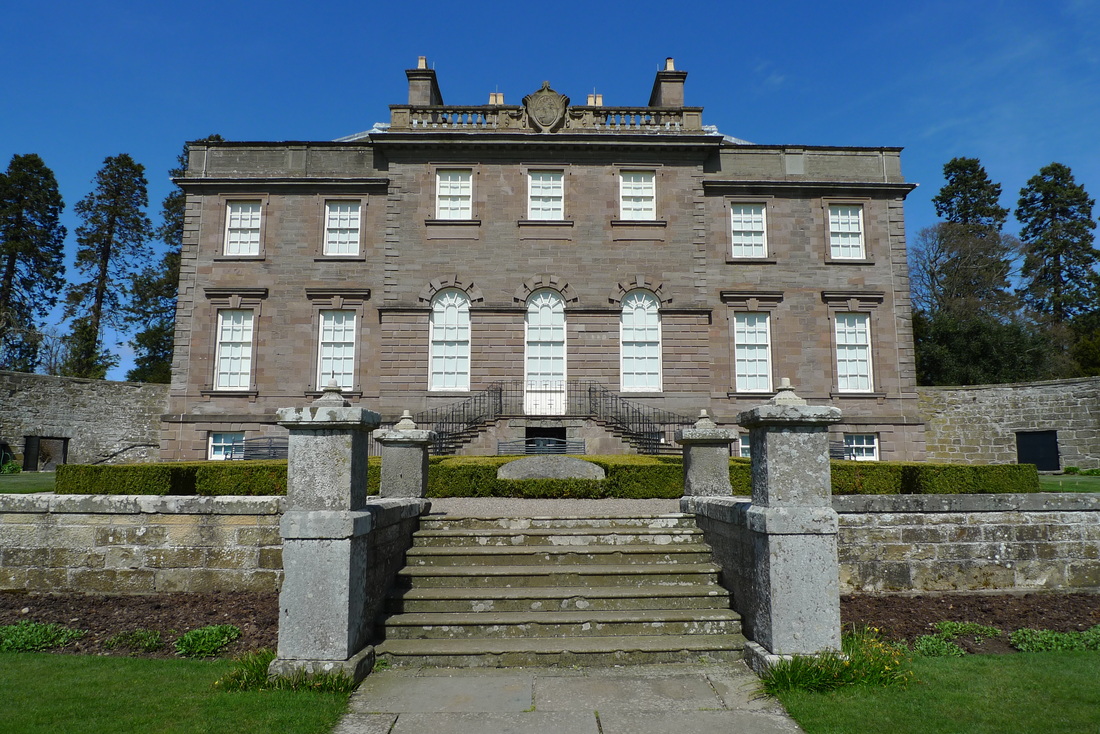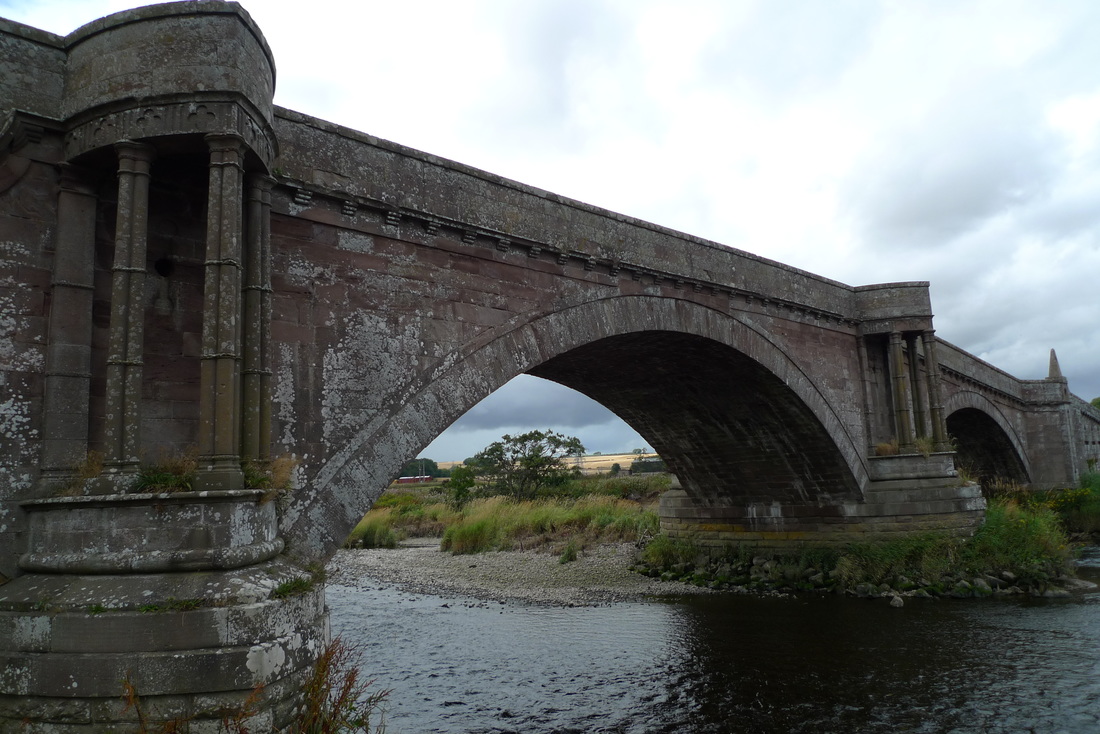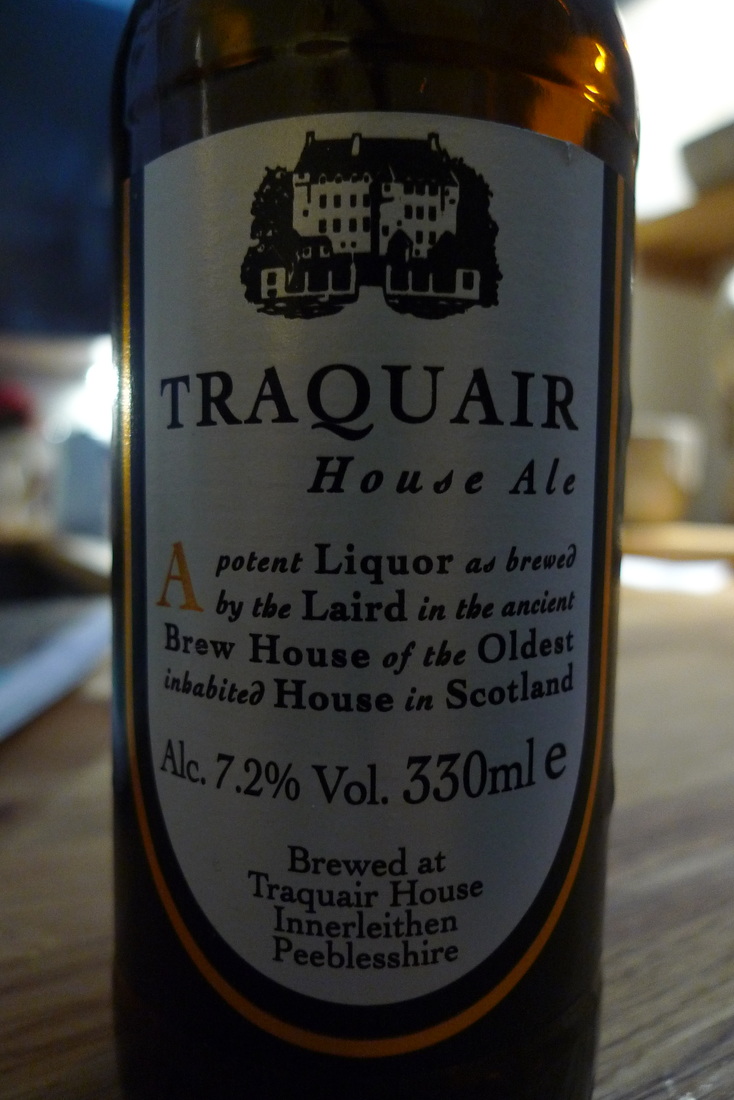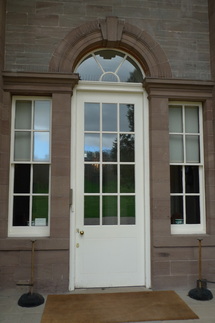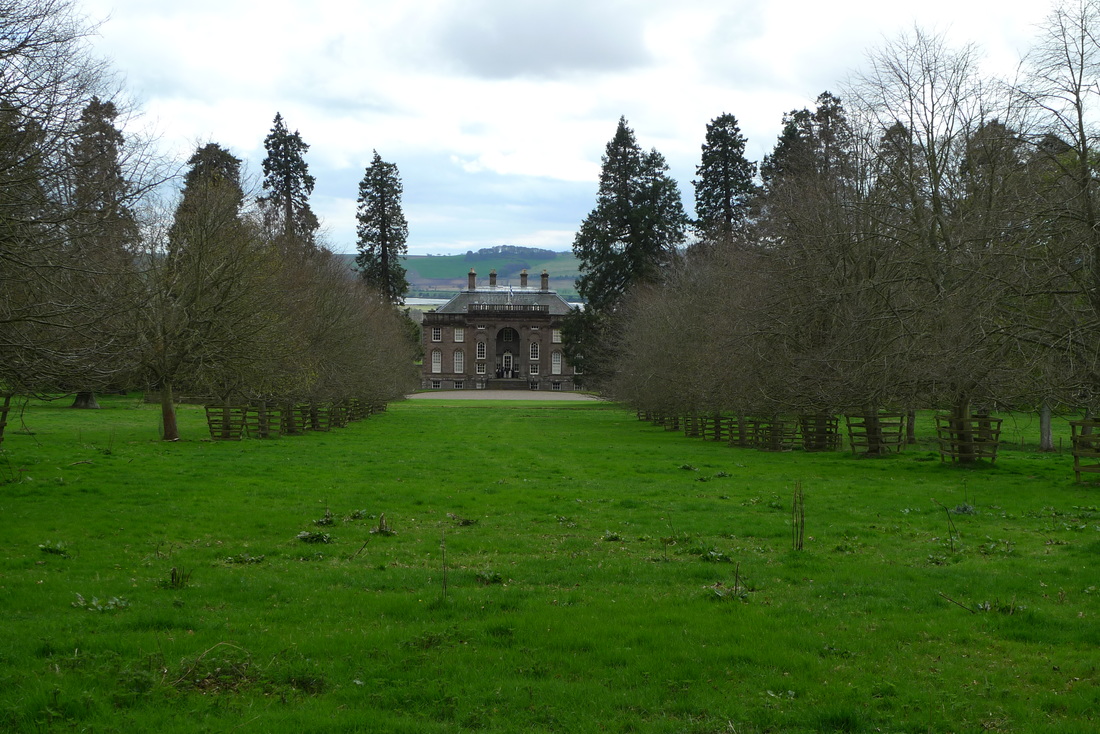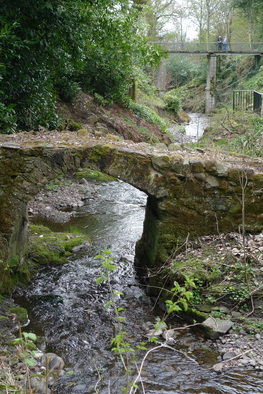|
Striking artwork make this bottle of beer standout. As does the taste which is rather like continental fruity beers, but it is brewed in Tweedbank in the Scottish Borders. It smells and tastes of passion fruit, but it is not overwhelmingly sweet or fruity. It is perfectly balanced and I loved it. My first thought on tasting this beer was 'interesting.' It certainly tastes of passion fruit, but it is not as sweet as I expected. There is a dry hop taste that tempers the sweetness. This is what makes it different to continental fruity beers, which can be intensely fruity. I do love Belgian fruit beers, but I also loved Passionfruit Berliner. I found it very refreshing and I will definitely be having this again. Tempest Brewing also produce Totally Radler, another fruit beer with continental influences. It is great that they are trying these different tastes and doing something a bit different to other Scottish beer producers. The label on Passionfruit Berliner makes the beer standout from the crowd in your local bottle shop. It was designed by an art student from Glasgow. I think that the bottle label is a vital element in a customer's decision to purchase a beer and you do see plenty of innovation from small breweries with their design. Tempest Brewing has a shop in the brewery, located in an industrial estate that is adjacent to Tweedbank station, the last stop on the Borders Railway. There is great cycling to be had in this part of Scotland, so there is no excuse for not trying a Tempest beer. There are stockists throughout Scotland, mainly in the east and the Borders. The Tempest website lists all the stockists and you can also buy online.
2 Comments
The Montrose Basin Cycle Route is an 11 mile circular ride that allows you to visit House of Dun, with its stunning plaster ceilings, the Caledonian Railway with its steam trains and the town of Brechin with its round tower. Montrose is less than 2 hours by train from Edinburgh or Glasgow, so this outing can be achievable as a day trip.
Step One: Cycle 4 miles from Montrose station to House of Dun When you leave the station turn left to get to House of Dun. The cycle route is alongside the A935 on pavements or segregated cycle paths. After 3.8 miles you will reach House of Dun. This country house was designed by the famous Scottish architect, William Adam. You can take a tour of the house, explore the gardens and feast on the home baking in the tea room. Read my blog about the House of Dunn
Step Two: Caledonian Railway
Almost opposite the entrance to House of Dun there is a turn-off for Bridge of Dun. Take this to reach the Caledonian Railway. On summer weekends heritage steam and diesel trains travel between Bridge of Dun and Brechin. This experience is about train travel for pleasure. This is all about stepping back in time to an era of carriages with compartments, windows that open and doors that you slam shut. Lock up your bike here and take the train to Brechin. Read my blog about the Caledonian Railway
Step Three: Explore Brechin on foot
Brechin has a pleasant town centre with merchant's houses dating from the late 1700s. The round tower, next to the cathedral, is one of only two in Scotland. Read my blog about Brechin
Step Four: Cross the Bridge of Dun
Return to Bridge of Dun on the Caledonian Railway and cross the spectacular bridge on your bicycle. Read my blog about the Bridge of Dun
Step Five: Cycle around Montrose Basin
The Montrose Basin Cycle Route is an excellent example of forward thinking by a local authority. The busy A935 makes it daunting to come here on a bicycle, but by making the pavement shared pedestrian and cycle path it has opened up the area to cycle tourism. Some parts of the pavement are very narrow with little space for bikes and people to pass, but they have made the best use of the existing infrastructure to ensure that it is viable to cycle safely in this area. The cycle path will take you back to Montrose station. Brechin is a pleasant town in Angus with interesting buildings, including a 1000 year old Celtic round tower. The most exciting way to reach the town is to cycle from Montrose to Bridge of Dun from where you can catch a steam train to Brechin. The Caledonian Railway is a heritage railway that operates steam and diesel trains between Bridge of Dun and Brechin. This is the nicest way to arrive into the town. The train station is one of the most striking buildings in the town with a glass canopy and decorative ironwork. Head to the High Street that has a steepness and collection of stone buildings that is reminiscent of Edinburgh's Old Town. The gable-ended merchant's houses date from the late 1700s. This style of building had the shop on the ground floor, the merchant's house upstairs and storage to the rear. Skinner's Burn walkway is a nice area of greenery between a stream and the rear of merchant's houses. The walk leads to the Cathedral. Outside the Cathedral a man in a blue anorak with a Yorkshire Terrier at his feet said to me, "come in, come in. I am one of the elders. Everyone is welcome. It's a fine Kirk, a fine Kirk." Once inside I found a peaceful and calming atmosphere, but it is outside that you will discover the most unique part of the building. This is the round tower, that dates from 1100, and is one of only two such towers in Scotland. They were much more common in Ireland and were bell towers. The tower at Brechin was here before the cathedral and incorporated into it. When a settlement came under attack these towers were also used as a place of refuge for people and valuables. The door is very narrow and six feet above the ground for the purpose of providing this protection. The doorway has beautiful carving, including a crucifixion at the top. In Saint Ninian's Square I was approached by a group of teenage boys and asked if I was from Brechin. When I said no they questioned why I would to choose to come here. "They should drop a bomb on it," one of them said. "Not when am still in it, idiot," his pal said. Another asked me if I was a rock star! I think this was in reference to my hair, which was a bit too long. He then said, "climb in that," and pointed to the granite fountain. "You won't get out again. It happened to me and I got lifted." "How did they get you out in the end?" I asked him. "They got me out with ladders." I was amazed that he managed to get into this fountain. It did not look easy. This encounter reminded me of how travellers and locals can have completely different perceptions of places. Whereas I found Brechin an enjoyable outing these boys were so bored that they risked climbing into a fountain and clearly could not wait for the day they could leave the town.
Getting there Take a train to Montrose. It takes around 1 hour, 40 minutes to 2 hours from Edinburgh or Glasgow, depending on which train service you travel on. It is a 4.3 mile cycle from Montrose station to Bridge of Dun, where the Caledonian Railway has a station. On summer weekends steam or diesel trains travel to Brechin. The Montrose Basin Cycle Route will take you there, mainly alongside the A935 on a segregated path or on the pavement. After 3.8 miles you come to a sign for Bridge of Dun, take this left turn and at the bottom of this road you will come to Bridge of Dun station. Both steam and diesel trains operate on the Caledonian Railway on weekends in the summer. If you have a preference for diesel or steam you should check the Caledonian Railway website to see which services will be running on which dates. Read my blog about the Caledonian Railway Why not visit the House of Dun? It is a short distance away from Bridge of Dun. Read my blog about the House of Dun Traquair House Ale, Jacobite Ale and Bear Ale. Brewed in Scotland's Oldest Inhabited House17/9/2016 Try an ale brewed in Scotland's oldest inhabited house. Traquair House had its own brewery in the 1700s, but it fell into disuse until being rediscovered in the 1960s. The brewery has since expanded and sells worldwide. The Traquair House Ale is the orginal product from the revived brewery. Despite being 7.2% I found this to be surprisingly light tasting with a subtle fruity aftertaste. I also tried the Jacobite Ale and the Bear Ale. This is history in a bottle. The old fashioned writing on the bottle and the dark brown, almost black colour of the liquid made me feel like I should be drinking this out of a tankard in a coaching inn. I like that this brewery sticks to its roots and does not try to compete with the hipster bottle label design that is becoming common with the newer breweries in Scotland. Traquair House was the hunting lodge for the kings of Scotland. Today you can visit the house and its brewery, a 16 mile cycle from Tweedbank, the last stop on the Borders Railway. There is nothing finer than drinking a beer in the place where it is produced and you can do this at the cafe. There is outdoor seating in the walled garden; the perfect place to enjoy your ale in the sunshine. At the very least you can buy some bottles to takeaway. Despite the 7.2% I did not find this a strong taste, which you usually find with ales. It has gentle carbonation, a subtle fruit taste and a hint of caramel. It does not taste sweet and the bitterness level is low. All in, I found it well-balanced and very satisfying. The historical connection and the location of the brewery in this beautiful house add to the appeal of this unique drink. On the back of the bottle there is a story about the bear gates at the house and a serving suggestion. Jacobite Ale Another drink from Traquair House is Jacobite Ale. This was originally produced in 1995 to celebrate the 200th anniversary of the 1745 Jacobite Rebellion. It was so popular that they have continued to make it and I can see why. It is delicious and my favourite of the two ales. The bottle design is also classic, following the historical theme of the house. The story of the Bear Gates also features on the rear of the bottle. This ale is 8%, so slightly stronger than the House Ale, but it does not taste that strong. It is simply delicious and easy to drink. The balance of carbonation and tastes of malt, spices and caramel is perfect. Interestingly the ale is brewed with coriander which creates the slightly spicy taste, but I would never have known it was coriander if I had not read it on the Traquair House website. I loved this ale and will be having it again. Bear Ale This is produced for the draught beer market and is also available in bottles. It is much lighter tasting and does not have the complexity of flavours that the other two ales have. The main taste that comes through is pleasant malt, bitterness and gentle carbonation, making this a good, solid ale. It is 5% so ideal for a session ale with your friends, so I can see this working well in a pub, served from the tap. You can buy crates of the ale on the Traquair House website and it can be found in some supermarkets and specialist beer shops.
Bella Bathurst examines the world of the bicycle from the invention of the machine to modern day cycling subsets. Everything is covered from cycle commuting to the Tour de France, from Indian rickshaw riders to BMX. This is a well-written and interesting exploration of cycling. If you want to know more about the story of the bicycle this book is an excellent choice.
One of the first pages of this book features some lines from the Queen song 'Bicycle Race'. This lines sums up what this book is all about, exploring the joy of riding a bike. This is done in an intelligent and thought-provoking manner. A major part of the book is the interviews with various people from the cycling world. This includes cycle commuters, racing cyclists and mountain bikers. This gives a superb insight into the lives and motivations of these types of cyclists. My favourite part of the book was the section about cycle couriers. This is a world I knew very little about and it was fascinating to read about their lifestyle and the dangers they face on the road. I also enjoyed the chapter about cycle corps in armies, especially after seeing the film. April 9, which was about Danish bicycle infantry facing the German invasion in 1940. The book is neatly divided into 11 chapters that concentrate on a particular theme. There is a section of colour pictures in the centre of the book and black and white prints throughout. There is a strong Scottish element to the book as the author talks to bicycle couriers in Edinburgh, interviews Danny MacAskill, the street trials cyclists from Skye and there is a chapter about Graeme Obree, the Scot who broke the world hour record. This book does a brilliant job of explaining the bicycle, the history of cycling and what defines cycling in the modern age. To buy this book click on the Amazon link below. I also recommend the brilliant film. April 9th, about the Danish bicycle infantry.
Considered the finest home of this size to be designed by the renowned Scottish architect, William Adam, the House of Dun boasts stunning plaster ceilings, tapestries and extensive gardens to explore. You can reach it easily on a bicycle as it is less than 4 miles from Montrose train station.
You approach the house down a tree lined avenue. As you go through the archway into the courtyard look up and notice the maker's name and 'Paris' on the clock face.
This is unmistakably Georgian architecture, with perfect proportions and symmetry. Everything matches. The first floor has tall arched windows that let the light flood into the principal rooms.
William Adam, the celebrated Scottish architect, designed the house for the Erskine family. It was inspired by Chateau d'Issy near Paris. Adam had three sons who were also renowned architects and throughout Scotland you will find many of their buildings. The Adam Style was the name given to the integrated interior and architecture design that was practiced by the Adams.
The main door into the house is framed by four ionic pilasters and an enormous archway.
Silent Companion
The violin is not the only surprise in the house. There are also fake doors. The guide asked someone in my tour group to open a door in the hallway. There was a brick wall behind it. Some doors are simply there to create symmetry in a room. Those Georgians were so obsessed with symmetry that they were willing to spend good money on pretend doors! The house has the expected antique furniture, ornaments and 17th century Flemish tapestries, but I am more interested in the unusual. The 'silent companion', a wooden cutout of a child, is something I had never heard of before. The guide told us that when the Lady of the house was on her own in the parlour she could ask a servant to bring the 'silent companion' for company. In the servants corridor we stopped next to the bells, which had the names of the rooms next to them. Each bell had a different tone, so that the servants could recognise which room they should go to. The servants would not be able to read. The guide rang a couple of the bells to let us hear the different tones.
The house provides sweeping views towards the Montrose Basin, a tidal basin that is a home to many bird species.
The grounds and gardens are a delight to explore.
My favourite part was the woodland walk with twisting paths, pretty flowers and a river with bridge crossings. It is completely enchanting.
When I paid at the counter I bought some of 'Janet's tablet' to takeaway and dropped some coins in the Victoria bedpan they had for tips. I commented to the American lady that it looked like it was going to be a busy day in the cafe and she said, "I hope so, we do enjoy serving people."
House of Dun is a National Trust property and there is an entrance charge. The Caledonian Railway is a short distance away from House of Dun. You can ride on steam trains to Brechin. Read my blog about the railway. How to get there Take a train to Montrose. It takes around 1 hour, 40 minutes to 2 hours from Edinburgh or Glasgow, depending on which train service you travel on. It is a 3.8 mile cycle from Montrose station to House of Dun, so a day trip visit to the house is a possibility. The Montrose Basin Cycle Route will take you there, mainly alongside the A935 on a segregated path or on the pavement. The map shows the route to the Caledonian Railway and the House of Dun is marked with the castle symbol. The Montrose Basin Cycle Route is an excellent example of forward thinking by a local authority. The busy A935 makes it daunting to come here on a bicycle, but by making the pavement shared pedestrian and cycle path it has opened up the area to cycle tourism. Some parts of the pavement are very narrow with little space for bikes and people to pass, but they have made the best use of the existing infrastructure to ensure that it is viable to cycle safely in this area. Other things to see and do
|
|




